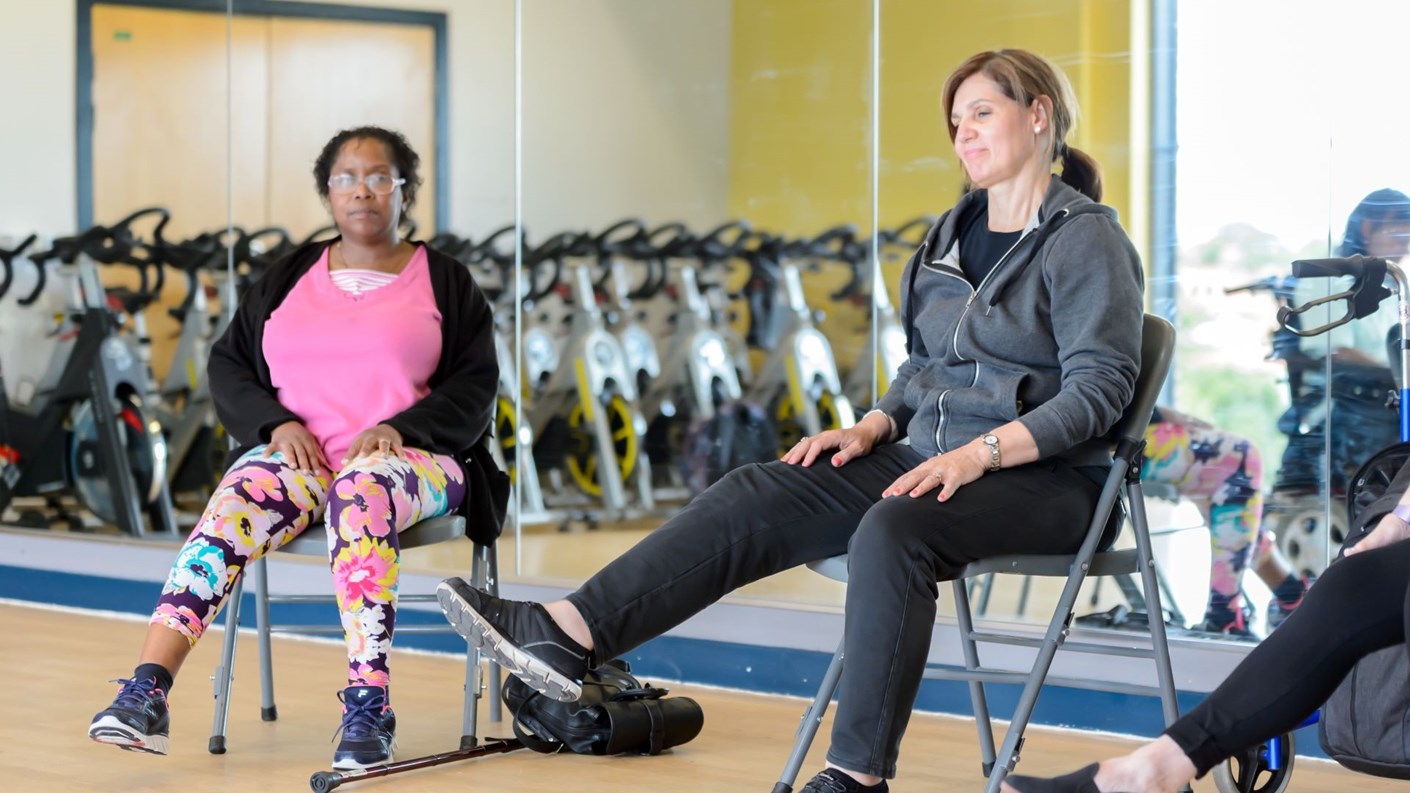Working hand in hand with healthcare for NHS reform
Increasing collaboration between the sport and physical activity sector and the NHS is essential to carrying out the government’s new 10-year plan
If a person is not physically healthy, they do not perform at their best. This may seem obvious in the context of PE lessons or the local parkrun, but active wellbeing has an enormous impact on a person’s ability to perform in other areas of life, too. This includes improving focus on work, decision-making and even the capacity to fight off and recover from serious illnesses like cancer. As the Chief Medical Officer put it:
“If physical activity were a drug, we would refer to it as a miracle cure.”
Considering the substantial effect of physical activity on the success of individuals, and therefore by default the success of businesses, it is surprising that this hasn’t been fully harnessed in government economy-boosting policies to date. Not only is physical activity essential for boosting the performance of working adults, but with 2.8 million people economically inactive due to long-term sickness, lack of exercise as a standard treatment is directly affecting the economy. However, without political backing, the sector has struggled to scale impactful schemes to benefit more communities and assist more people to return to work.
As a nation, we are still struggling to get to grips with this miracle cure. While the overall percentage of adults meeting the Chief Medical Officer’s guidelines for activity seems positive at 63.4%, there is a bigger challenge remaining than appearances suggest. In fact, the number of active adults has increased little in recent years, with a percentage rise of just 1.3% since 2016. This may seem surprising considering widespread public campaigns such as NHS Better Health and This Girl Can tirelessly championing active wellbeing and manageable lifestyle changes.
But there is hope – with continuing financial pressures on public health, the financial benefits of sport and physical activity as a healthcare solution is sinking in. Released only yesterday, Lord Darzi’s report on the NHS highlights with unmistakeable clarity how “rebalancing the system” preventative care in the community is key to reforming the NHS. As a result, the prime minister is keen to transition to a “preventative system” for ensuring public health.
What this will mean in practicality is using more financially viable and sustainable options than giving a patient a box of tablets for the next four weeks. For example, a gym membership, a referral for a group exercise class or a course of swimming lessons is often cheaper and lasts longer than pharmaceutical intervention.
The effect that our sector can have is widespread and improves functionality on all levels. Potential impact spans from reducing hospital waiting lists to GP appointment scarcity and even the time it takes for an ambulance to be available for emergencies. Ensuring that the UK population is healthier overall through active wellbeing can allow those who do need medical care to receive it more efficiently.
Local action
For a long time, CIMSPA has been part of the national dialogue about what sport and physical activity can do to improve the health of the nation and thereby reduce strain on public health services.
Over the past few years, we have also started to approach the challenge from a local and individual level. Local health priorities link to skills in our sector on two levels. Firstly, we need to ensure that the sport and physical activity workforce has the necessary skills to work with patients and those at risk of the conditions highlighted in health priority plans. Secondly, local economic goals in any given area fundamentally require a fit workforce to achieve them. In order to meet these targets, communities and economic areas need skilled sport and physical activity professionals to keep workers fit.
As part of the CIMSPA strategy, we are focusing on delivering national success by working at a local level with local public services, professionals and employers. Involvement and connection with these health and economic priorities has centred around our skills hub managers engaging with local integrated care boards (ICBs), health organisations, leisure facilities and sport and physical activity business owners. Together, these key stakeholders are exploring what resources can be used and are needed to achieve integration with healthcare services and meeting wider local priorities. Many of the organisations involved come together to form local skills accountability boards (LSABs).
The result of LSAB meetings is local skills plans, which provide a blueprint for developing the sport and physical activity sector in the local area, including how we can support healthcare priorities and the local economy. These are followed up with an action plan for how tangible results can be achieved, specific to the individual region’s needs and existing environment.
Specialist skills
Executing these plans will require close collaboration with local ICBs. These are the guardians of funding. Sitting directly below NHS England, ICBs receive funding and then disseminate it across the entire healthcare system. By engaging at this level, we can ensure that sport and physical activity is included as part of the solution for improving public healthcare in every part of the UK.
To achieve this kind of close collaboration is difficult, though. As the protector of public health, the NHS will only entrust patients to a reliable, understandable and professional workforce. This requires quality-assured, standardised qualifications and professional recognition for sport and physical activity professionals that is not only clear to sector employers but also to external contacts such as those in the NHS.
By ensuring that employees are recognised as reliable and health-specialised professionals, local leisure centres are able to secure funding from ICBs to work collaboratively with the health sector and integrate services.
We have made it easier to align with health sector needs by collaborating with health partners to create the Working with People with Long-Term Conditions professional standard. Designed to allow sport and physical activity professionals to demonstrate their ability to provide healthcare services, this is an important tool in collaborating with healthcare heavyweights like the NHS.
The standard specifies the skills required to work within the sector in a healthcare context as defined by the experts and real employers. By completing qualifications aligned with this, sector professionals are able to demonstrate competencies that health experts require for working with patients as a healthcare solution.
Creating this easily understandable framework of professional recognition also offers mutual benefit. Adding healthcare services is an opportunity for diversifying skills, both for individuals and for businesses looking to expand operations into new areas and improve long-term prospects for growth.
Pioneering work
Often overlooked, Devon and Cornwall are forging a strong path ahead in this cooperation between healthcare and sport and physical activity. The two counties are showing great examples of engagement, collaboration and sector connectivity. In an effort to tackle historic struggles to deliver training within the region, the local skills accountability boards in both counties have come together, working to create plans for educating, recruiting and upskilling the sport and physical activity workforce.
Devon stakeholder and LSAB member Active Devon published a report earlier this year exploring current challenges and local opportunities to improve. This focused considerably on the county’s integrated care system, One Devon NHS, and how successful recent efforts to work collaboratively have been.
There has also already been action among businesses in the South West. Community leisure company Plymouth Active has created the role of Active Health Manager in an effort to focus its efforts to diversify into healthcare. The individuals taking on the job will be responsible for leading on connecting with the community and delivering active health in local leisure facilities.
South West Skills Hub Manager Simon Barnes is excited about the progress made with these local stakeholders:
“We are collectively exploring how to better educate and prepare the sport and physical activity workforce for deployment to support long-term health conditions, health coaching and more. The group intends to develop short and long-term strategies to better align our sector with health priorities and we are keen to embed system-wide changes.
“Supported by discussions with education providers, a new task-and-finish group will explore career development opportunities from sport and physical activity into health.”
Tangible results
While it is in everyone’s interest to reduce strain on the NHS, forming a productive partnership between healthcare and sport and physical activity services will be most immediately beneficial to businesses. Securing an NHS contract creates a substantial and reliable source of income in a time when many struggling with the cost-of-living crisis need this kind of support.
This type of collaboration is exemplified by Sport for Confidence. The initiative places occupational therapists in leisure centres to support people with additional needs. As well as the initial return from referring patients to leisure centre-based activities, the integrated service creates new relationships between users and businesses, offering the opportunity to gain returning customers, even once their prescribed treatment has ended. Sport for Confidence summarises the mutual benefit well – “you are never discharged from a leisure centre”.
If integrated service hubs with a range of community facilities such as the National Centre for Sport and Exercise Medicine facilities in Sheffield become the norm, these will bring more people through the doors of sport and physical activity businesses. By attracting those less inclined to go to the gym or have a kickabout at the local pitch, the supportive and social nature of these integrated services will inspire them to take part and further diversify the customer base of local businesses.
Measuring and demonstrating success in terms of healthcare improvement will be a challenge, however. The aim is to achieve tangible data demonstrating real impact in areas like reducing waiting times. This is exactly the type of result that the new government will seek to demonstrate the success of the newly announced ten-year reformation plan. Being able to present localised data such as this on a national stage will demonstrate the productivity of pouring funding into community projects. In turn, this will encourage other local NHS services to implement similar measures and funding across further regions.
The eventual result should be a financially healthier and better-functioning NHS, a highly skilled and professionally recognised sport and physical activity workforce and, overall, a healthier nation better ready to grow the national economy.
Though there continues to be significant challenges in this field, momentum has been gained and continues to build with the support of the new government providing a much-needed boost. At CIMSPA, we continue to do all that we can to drive this positive change for our sector.


